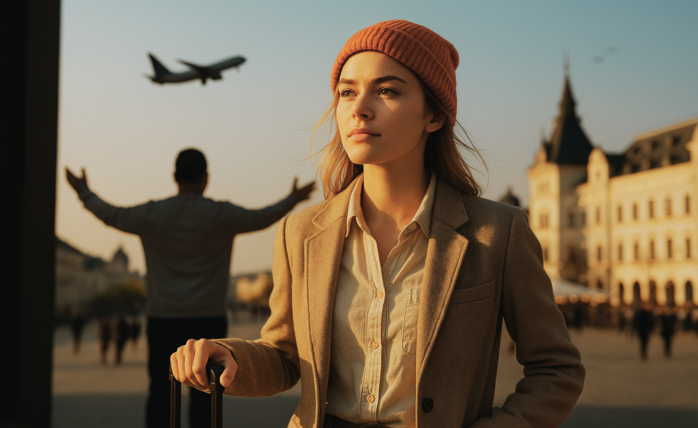Life
2 of the Best Techniques I’ve Ever Used to Remember My Top Priorities

Everyone starts out with the best of intentions. Yet, how often do we forget to focus on our priorities? The answer is that even top performers can have their focus yanked away. The good news is that there are some quick tricks anyone can use to stop forgetting their priorities.
The Priority Pyramid Exercise
We all know that top performers are practically addicted to meditation. But did you know that you can use meditation to remember your top priorities better? Here’s how:
- Of all the things you need to get done, pick just three. Ideally, these will be truly deserving of attention.
- While seated or performing a walking meditation, arrange these priorities mentally in the form of a pyramid.
- Mentally rotate them in your mind to “test” the level of priority
For example, let’s say your three priorities have been boiled down to writing for an hour, making some business outreach calls and publishing a new video. You would mentally rotate these priorities and ask each time a task reached the top position if it really needs to be done first.
This exercise relates to what scientists call cognitive switching, and it has been shown to improve critical thinking skills. The best part? If you practice this consistently over 90-days, it will likely become a permanent habit. You won’t have to remember to do it because you’ll be positively addicted to the exercise.
As a result, you’ll be trained to focus on testing your priorities frequently. We know just how powerful testing can be for improving results, so enjoy the renewed success this practice brings.
“The first step to success is knowing your priorities.” – Aspesh
The To-Do List Memory Palace
Of course, all priorities come with a list of individual steps to complete. To help make it easy and fun, I suggest an ancient memory technique called the Memory Palace. Simply put, to use this mnemonic device, you take any room you’re familiar with and bring it to your imagination.
It can be any room you choose. In fact, it doesn’t have to be a whole room. You can easily just use the desk in your home office. Once you’ve chosen something, you place associations in this room that help you remember the things you need to do.
Let’s say that you decide your top priority is to publish a new video. The steps are:
- Record the video and upload to YouTube
- Add title and tags
- Write description
- Add to your blog and press publish
To remember these steps, you could just jot them down. But that robs you of some beneficial memory exercise. Plus, it won’t help you train your procedural memory to improve so you keep taking consistent action, almost on autopilot. This technique has also been proven to increase focus and concentration, so using it is a win-win.
For that reason, I highly recommend placing associations in a Memory Palace around your work space. Like this:

In this example, I’ve used the walls and corners of the desk to attach some associations.
- The YouTube logo floating on the corner makes it easy to remember shooting and uploading the video
- The image of adding a sticky note to a computer screen helps recall adding a title and tags
- A typewriter on another part of the wall helps trigger the need to write a description
- An image of the WordPress interface helps with remembering the final publishing step
To make these associations memorable, you want to exaggerate them a little. It can also help to have them interact with each other. For example, the YouTube logo can be beating like a heart and expressing love for the sticky notes. The typewriter can have its keys falling off and clattering onto the WordPress screen.
By elaborating the images in this way, you form a chain between the associations that makes each part even more memorable. This is essentially how people have been using the Memory Palace technique for thousands of years. Now you know how to do it for crushing your goals too.
Obviously, this technique works for both simple and complex, multi-step tasks. The trick is to get started and practice it consistently enough so that you can develop habits of memory and associate those new skills with taking action.
“If it’s a priority you’ll find a way. If it isn’t, you’ll find an excuse.” – Jim Rohn
Combining Skills of Implementation Over the Long Term
Nothing happens overnight, and many people are not used to operating their minds as I’ve just suggested. It’s normal to be rusty when using exercises and processes like these. To help loosen up, I suggest keeping a journal for the first 90-days. That way you aren’t juggling everything in your mind. You can also use the journal to draw your Memory Palace as a simple square. This helps develop more advanced abilities with spatial memory.
There’s no cookie-cutter advice on how exactly to keep a journal, so it’s best to experiment. That way you’re also giving yourself the gift of exploring something new and discovering exactly what approaches work best for you. This form of self-optimization is always deeply personal, even if the brain science behind it is fundamentally the same for everyone.
Finally, consider using these skills as a marathon, not a race. Before you know it, you’ll realize that you’ve developed incredible endurance. You’ll be glad that you trained your imagination and memory to help you with consistency along the way.
Did You Know
How Skilled Migrants Are Building Successful Careers After Moving Countries
Behind every successful skilled migrant career is a mix of resilience, strategy, and navigating systems built for locals.

Moving to a new country for work is exciting, but it can also be unnerving. Skilled migrants leave behind familiar systems, networks, and support to pursue better job opportunities and a better future for their families. (more…)
Life
10 Research-Backed Steps to Create Real Change This New Year
This New Year could finally be the one where you break old patterns and create real, lasting change.

Every New Year, we make plans and set goals, but often repeat old patterns. (more…)
Life
9 Harsh Truths Every Young Man Must Face to Succeed in the Modern World
Before chasing success, every young man needs to face these 9 brutal realities shaping masculinity in the modern world.

Many young men today quietly battle depression, loneliness, and a sense of confusion about who they’re meant to be.
Some blame the lack of deep friendships or romantic relationships. Others feel lost in a digital world that often labels traditional masculinity as “toxic.”
But the truth is this: becoming a man in the modern age takes more than just surviving. It takes resilience, direction, and a willingness to grow even when no one’s watching.
Success doesn’t arrive by accident or luck. It’s built on discipline, sacrifice, and consistency.
Here are 9 harsh truths every young man should know if he wants to thrive, not just survive, in the digital age.
1. Never Use Your Illness as an Excuse
As Dr. Jordan B. Peterson often says, successful people don’t complain; they act.
Your illness, hardship, or struggle shouldn’t define your limits; it should define your motivation. Rest when you must, but always get back up and keep building your dreams. Motivation doesn’t appear magically. It comes after you take action.
Here are five key lessons I’ve learned from Dr. Peterson:
-
Learn to write clearly; clarity of thought makes you dangerous.
-
Read quality literature in your free time.
-
Nurture a strong relationship with your family.
-
Share your ideas publicly; your voice matters.
-
Become a “monster”, powerful, but disciplined enough to control it.
The best leaders and thinkers are grounded. They welcome criticism, adapt quickly, and keep moving forward no matter what.
2. You Can’t Please Everyone And That’s Okay
You don’t need a crowd of people to feel fulfilled. You need a few friends who genuinely accept you for who you are.
If your circle doesn’t bring out your best, it’s okay to walk away. Solitude can be a powerful teacher. It gives you space to understand what you truly want from life. Remember, successful men aren’t people-pleasers; they’re purpose-driven.
3. You Can Control the Process, Not the Outcome
Especially in creative work, writing, business, or content creation, you control effort, not results.
You might publish two articles a day, but you can’t dictate which one will go viral. Focus on mastery, not metrics. Many great writers toiled for years in obscurity before anyone noticed them. Rejection, criticism, and indifference are all part of the path.
The best creators focus on storytelling, not applause.
4. Rejection Is Never Personal
Rejection doesn’t mean you’re unworthy. It simply means your offer, idea, or timing didn’t align.
Every successful person has faced rejection repeatedly. What separates them is persistence and perspective. They see rejection as feedback, not failure. The faster you learn that truth, the faster you’ll grow.
5. Women Value Comfort and Security
Understanding women requires maturity and empathy.
Through books, lectures, and personal growth, I’ve learned that most women desire a man who is grounded, intelligent, confident, emotionally stable, and consistent. Some want humor, others intellect, but nearly all want to feel safe and supported.
Instead of chasing attention, work on self-improvement. Build competence and confidence, and the rest will follow naturally.
6. There’s No Such Thing as Failure, Only Lessons
A powerful lesson from Neuro-Linguistic Programming: failure only exists when you stop trying.
Every mistake brings data. Every setback builds wisdom. The most successful men aren’t fearless. They’ve simply learned to act despite fear.
Be proud of your scars. They’re proof you were brave enough to try.
7. Public Speaking Is an Art Form
Public speaking is one of the most valuable and underrated skills a man can master.
It’s not about perfection; it’s about connection. The best speakers tell stories, inspire confidence, and make people feel seen. They research deeply, speak honestly, and practice relentlessly.
If you can speak well, you can lead, sell, teach, and inspire. Start small, practice at work, in class, or even in front of a mirror, and watch your confidence skyrocket.
8. Teaching Is Leadership in Disguise
Great teachers are not just knowledgeable. They’re brave, compassionate, and disciplined.
Teaching forces you to articulate what you know, and in doing so, you master it at a deeper level. Whether you’re mentoring a peer, leading a team, or sharing insights online, teaching refines your purpose.
Lifelong learners become lifelong leaders.
9. Study Human Nature to Achieve Your Dreams
One of the toughest lessons to accept: most people are self-interested.
That’s not cynicism, it’s human nature. Understanding this helps you navigate relationships, business, and communication more effectively.
Everyone has a darker side, but successful people learn to channel theirs productively into discipline, creativity, and drive.
Psychology isn’t just theory; it’s a toolkit. Learn how people think, act, and decide, and you’ll know how to lead them, influence them, and even understand yourself better.
Final Thoughts
The digital age offers endless opportunities, but only to those who are willing to take responsibility, confront discomfort, and keep improving.
Becoming a man today means embracing the hard truths most avoid.
Because at the end of the day, success isn’t about luck. It’s about who you become when life tests you the most.
Change Your Mindset
The Four Types of Happiness: Which One Are You Living In?
Most people chase success only to find emptiness, this model reveals why true happiness lies somewhere else.

In a world driven by rapid technological growth and constant competition, many people unknowingly trade joy for achievement. (more…)
-

 Did You Know4 weeks ago
Did You Know4 weeks agoThe Success Patterns You Inherited (And Didn’t Notice)
-

 Entrepreneurs3 weeks ago
Entrepreneurs3 weeks agoThe Essential Skills Every Entrepreneur Needs In 2026
-

 Business4 weeks ago
Business4 weeks agoThe Hidden Money Pit in Your Operations (and How to Use It)
-

 Change Your Mindset3 weeks ago
Change Your Mindset3 weeks agoHow to Turn Your Mind Into Your Greatest Asset (Instead of Your Enemy)
-

 Change Your Mindset2 weeks ago
Change Your Mindset2 weeks agoThe Silent Skill That Makes People Respect You Instantly
-

 Life2 weeks ago
Life2 weeks ago10 Research-Backed Steps to Create Real Change This New Year
-

 Tech2 weeks ago
Tech2 weeks agoWhat’s in a Name? How to Get Your Domain Right
-

 Did You Know1 week ago
Did You Know1 week agoHow Skilled Migrants Are Building Successful Careers After Moving Countries





















